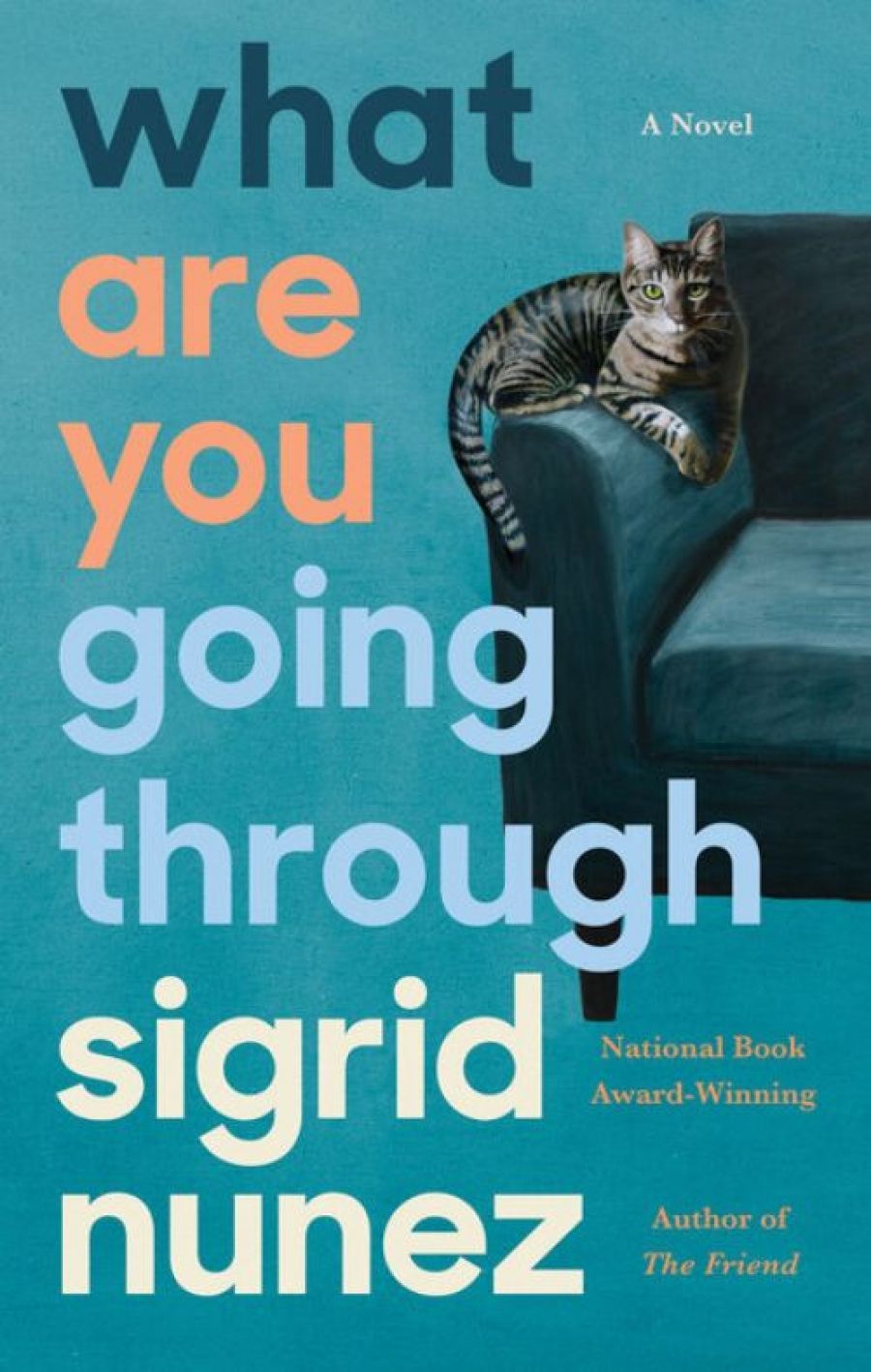
- Free Article: No
- Contents Category: Fiction
- Review Article: Yes
- Article Title: ‘Beckett wouldn’t do it’
- Article Subtitle: Sigrid Nunez’s new novel
- Custom Highlight Text:
In 1976, Sigrid Nunez moved into an apartment on Riverside Drive in New York with her then boyfriend, David Reiff, and his mother, Susan Sontag. Nunez is a person who cherishes solitude. In Sempre Susan, her tribute to Sontag, she describes the strain of living with extroverts when her dream, from her teenage years, had been: ‘A single room. A chair, a table, a bed. Windows on a garden. Music. Books. A cat to teach me how to be alone with dignity.’ Sontag never wanted to be alone. Nunez was drawn into constant dinners, movies, and mountainous correspondence interrupted by telephone calls and visits, often from Joseph Brodsky, the Russian poet, who sometimes meowed like a cat instead of saying hello. (Although Nunez liked him, Brodsky was clearly not the cat of her dreams.) Sontag, objecting to a routine interview, grumbled that ‘Beckett wouldn’t do it’, which became a private refrain for Nunez, oppressed by the relentless activity of the household and the pressure for her to join in.
- Grid Image (300px * 250px):

- Book 1 Title: What Are You Going Through
- Book 1 Subtitle: A novel
- Book 1 Biblio: Virago, $29.99 pb, 210 pp
- Book 1 Readings Link: booktopia.kh4ffx.net/94MDE
The ‘great question’ here is not only the generous enquiry of the title, which is at the heart of Simone Weil’s observation that ‘The love of our neighbor in all its fullness means being able to say “What are you going through?”’, but the further troubling question of how others describe what they are going through, not to mention the issue of where we all end up. Nunez is preoccupied with compassion and responsibility in this novel, but she is a sardonic and funny writer, extending Weil’s question in unexpected directions.
There are three intersecting elements in What Are You Going Through: a consideration of the dangerous state of the world; a concern with storytelling; and, most importantly, the gradual loss of a terminally ill friend, whose progression towards death is documented by the narrator, until she reaches the point where words will not carry the substance of her experience and the connection between friends takes place through calm flickers of telepathy and understanding.
The novel opens with the narrator attending a public lecture on the subject of imminent global catastrophe. The speaker, a handsome male intellectual, lectures an initially polite audience about the proliferation of weapons, mass extinction, climate change, terrorism, and pandemics. He takes no questions and offers no solutions except absolutely zero population growth: people must stop having children. The audience, which had been hoping for something more constructive, makes its own entertainment on the way out of the auditorium. They complain, they mock him, some head straight for the nearest bar, and one whistles ‘These are a Few of My Favourite Things’. To make matters worse, he is the narrator’s ex. He is one of many misconnecting storytellers in this novel, and Nunez makes the point that the impersonal disaster story, though profoundly important, is easy for most of us to evade. ‘What are you going through’ may be the question, but listeners cannot always cope with the response.
In the course of caring for her friend, the narrator stays in rental accommodation where the bedside reading is a thriller about a man who begins with a simple and unsuccessful plan to kill his wife. It ends with his imprisonment, not just in a correctional facility but in a fantasy that his crimes will inspire a novel, then a film starring John Travolta. This parody of death and danger is part of an exploration of storytelling that culminates in the fairy tale, which, according to the narrator, provides a fitting template for contemporary experience: ‘Fairy tales are real. They are more mysterious than any mystery novel.’ As if to illustrate the point, one of the most compelling stories in What Are You Going Through is recounted by a magical cat, a ‘beautiful bourbon-eyed silver-furred cat’ that joins the narrator in her Airbnb room and talks to her during the night. The cat has an engaging voice. His story of the loss of his mother in an animal shelter, the fire that expelled him from his first home, his capture by cruel children, and finally his cheerful state of infantilisation by the woman who owns the Airbnb is one of the most successful responses to the unspoken titular question. His listener is receptive, and his story ends well. He has the kind of feline dignity that Nunez describes in Sempre Susan, where she anticipates a simple life with a cat.
‘Women’s stories are often sad stories,’ the narrator points out. Children are not necessarily a consolation. Ageing, in particular, is sad. The two friends are in a heartbreaking situation: one dying and the other keeping her company. But the banter between them crackles with humour and clear-eyed judgement. The story is not bleak or gothic. As the dying woman deteriorates, their companionship has periods of warm, silent communion. Words lose their importance, both as a means of communication between the women and as a way of carrying the story of a death. ‘I have tried,’ writes the narrator. ‘I have put down one word after the other. Knowing that every word could have been different.’ These are the kind of sentences that Beckett might have written.


Comments powered by CComment